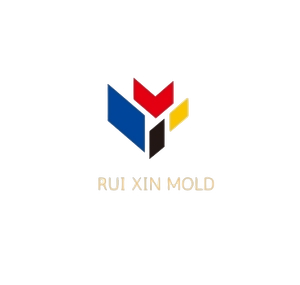-

- In the ever-evolving world of injection molding, 3D printing is making significant strides, particularly in the design and functionality of hot runner manifolds. This innovative approach is transforming traditional manufacturing processes, offering numerous benefits that enhance efficiency, reduce costs, and improve product quality. Here’s a detailed look at how 3D printing is revolutionizing hot runner manifold design.
Enhanced Design Freedom
- One of the most significant advantages of 3D printing in hot runner manifold design is the enhanced design freedom it offers. Traditional manufacturing methods often limit the complexity of melt flow channel designs. However, 3D printing allows for the creation of intricate and optimized flow paths that were previously unattainable. This increased design flexibility enables engineers to develop more efficient manifold layouts, improving melt distribution and reducing pressure drops.
Optimized Melt Flow
- The ability to create complex geometries through 3D printing enables the design of manifolds with smoother, more streamlined melt channels. This optimization can lead to better flow characteristics, reducing shear stress on the molten plastic and potentially improving part quality. By eliminating sharp corners and abrupt transitions, 3D-printed manifolds can help minimize dead spots and areas of poor flow that are common in traditional designs.
Improved Thermal Management
- 3D printing allows for the integration of conformal cooling channels within the manifold structure. These channels can follow the contours of the melt flow paths more closely than traditional straight-drilled cooling lines, resulting in more uniform temperature control throughout the manifold. Better thermal management can lead to improved melt consistency and reduced cycle times, enhancing overall production efficiency.
Reduced Material Waste
- The additive nature of 3D printing means that material is only deposited where needed, potentially reducing the overall weight and material usage of the manifold. This can be particularly beneficial for large-scale production runs, where even small reductions in material can lead to significant cost savings over time. Additionally, the ability to produce parts with minimal waste aligns with sustainable manufacturing practices, reducing the environmental impact.
Faster Prototyping and Iteration
- 3D printing enables rapid prototyping of new manifold designs. This allows engineers to quickly test and refine their concepts, potentially accelerating the development process for new injection molding tools. The ability to iterate designs quickly can lead to more innovative and efficient manifold solutions. For instance, a color change from black to white ABS material was performed, and the injection unit was purged during the change. The hot runner experienced pure white material in the first cycle after the color change. After just four shot cycles, the side equipped with the 3D printed manifold showed no deposits forming around the valve pin stem, demonstrating the efficiency of the design[1].
Customization for Specific Applications
- The flexibility of 3D printing allows for easier customization of manifolds for specific molding applications. Designers can tailor the manifold geometry to the exact requirements of a particular part or material, potentially improving overall molding performance. This customization is particularly beneficial in industries such as automotive, electronics, and medical devices, where specific part requirements are critical.
Case Study: Color Change Efficiency
- A practical example of the benefits of 3D printing in hot runner manifold design is seen in the efficiency of color changes. Testing revealed that the estimated color change in a hot runner system could be completed 3-4 times faster with a 3D printed manifold, while eliminating the needle shadow. This not only improves the efficiency of the process but also reduces the risk of contamination and defects in the final product. The use of 3D printed metal inserts can ease manufacturing and help reduce system failures in the injection molding process, providing long-term cost savings[1].
Conclusion
- 3D printing is driving innovation in hot runner manifold design for injection molding. By offering enhanced design freedom, optimized melt flow, improved thermal management, reduced material waste, faster prototyping, and greater customization options, this technology is helping to advance the efficiency and capabilities of injection molding processes. As 3D printing continues to evolve, we can expect to see further improvements in hot runner manifold design and performance, ultimately leading to higher quality products and more efficient manufacturing processes.
- By leveraging the advantages of 3D printing, manufacturers can produce high-quality parts with speed and efficiency, meeting the demands of modern production requirements and market needs. The integration of 3D printing in hot runner manifold design is not just a trend but a significant step forward in the evolution of injection molding technology.
- For more insights and detailed case studies on the impact of 3D printing in mold making, visit:www.dgruixinmold.com
